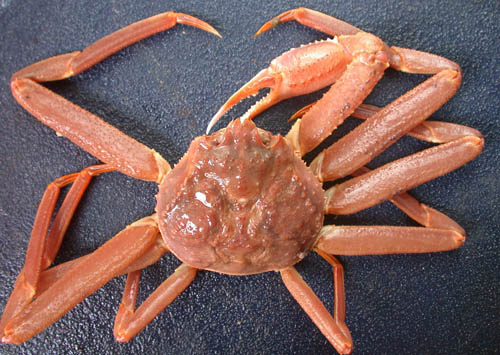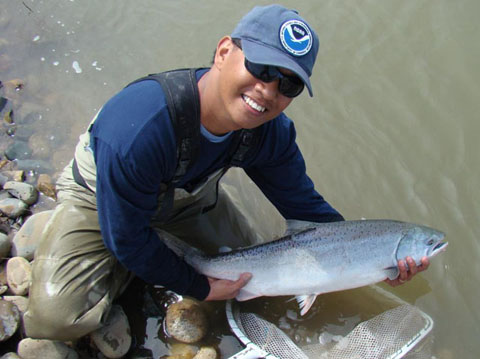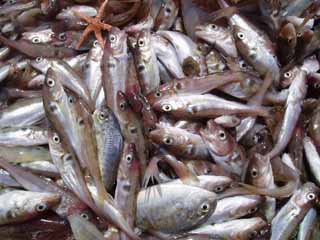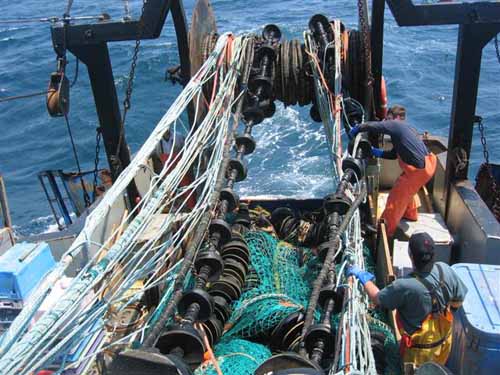Navigation
NOAA Reports a Record Number of Rebuilt Fisheries
A record six fish populations were declared rebuilt to healthy levels in 2011, bringing the number of rebuilt U.S. marine fish populations in the last 11 years to 27, according to a report to Congress out today from NOAA’s Fisheries Service. This report documents historic progress toward ending overfishing and rebuilding our nation’s fisheries, due to the commitment of fishermen, fishing communities, non-governmental organizations, scientists, and managers.
 Chinook salmon, Oncorhynchus tshawytscha: The scientific name for Chinook salmon, Oncorhynchus tshawytscha, is derived from the Greek words “onkos” (hook), “rynchos” (nose), and “tshawytscha” (the common name for the species in Siberia and Alaska). New scientific information and analyses about the Southern Resident population of killer whales and the extent of their reliance on salmon – particularly large chinook salmon – strongly suggest that chinook abundance is very important to survival and recovery of these whales. Fisheries coast wide are potentially affected by the extensive range of both chinook salmon and killer whales. Photograph courtesy of U.S. Geological Survey.
Chinook salmon, Oncorhynchus tshawytscha: The scientific name for Chinook salmon, Oncorhynchus tshawytscha, is derived from the Greek words “onkos” (hook), “rynchos” (nose), and “tshawytscha” (the common name for the species in Siberia and Alaska). New scientific information and analyses about the Southern Resident population of killer whales and the extent of their reliance on salmon – particularly large chinook salmon – strongly suggest that chinook abundance is very important to survival and recovery of these whales. Fisheries coast wide are potentially affected by the extensive range of both chinook salmon and killer whales. Photograph courtesy of U.S. Geological Survey.
A record six fish populations were declared rebuilt to healthy levels in 2011, bringing the number of rebuilt U.S. marine fish populations in the last 11 years to 27, according to a report to Congress out today from NOAA’s Fisheries Service. This report documents historic progress toward ending overfishing and rebuilding our nation’s fisheries, due to the commitment of fishermen, fishing communities, non-governmental organizations, scientists, and managers.
NOAA’s Status of U.S. Fisheries report declares Bering Sea snow crab, Atlantic coast summer flounder, Gulf of Maine haddock, northern California coast Chinook salmon, Washington coast coho salmon, and Pacific coast widow rockfish fully rebuilt to healthy levels.
 Snow crab taken during the 2008 Beaufort Sea Survey.: Crabs are incidentally caught in fisheries for groundfish and scallops. These fisheries are prohibited from harvesting crab so if they catch them, they are required to throw them back. However, because most of these discarded crabs die, researchers, managers, and fishermen have worked hard to reduce bycatch of crab in other fisheries. A number of measures are in place in other fisheries to protect crab, including bycatch limits, closed areas, and modifications to fishing gear. Researchers continue to look for new ways to protect the valuable crab resource. Photograph and text courtesy of NOAA
Snow crab taken during the 2008 Beaufort Sea Survey.: Crabs are incidentally caught in fisheries for groundfish and scallops. These fisheries are prohibited from harvesting crab so if they catch them, they are required to throw them back. However, because most of these discarded crabs die, researchers, managers, and fishermen have worked hard to reduce bycatch of crab in other fisheries. A number of measures are in place in other fisheries to protect crab, including bycatch limits, closed areas, and modifications to fishing gear. Researchers continue to look for new ways to protect the valuable crab resource. Photograph and text courtesy of NOAA
“With annual catch limits in place this year for all domestic fish populations and the continued commitment of fishermen to rebuild the stocks they rely on, we’re making even greater progress in ending overfishing and rebuilding stocks around the nation,” said Samuel Rauch, acting assistant NOAA administrator for fisheries. “Healthy and abundant fish populations and marine ecosystems support seafood for Americans, create lasting jobs, and enhance saltwater recreational fishing opportunities.”
Two indicators of stock health increased slightly over 2010:
- 86 percent of the populations examined for fishing activity (222 of 258) were not subject to overfishing, or not fished at too high a level, compared to 84 percent in 2010
- 79 percent of assessed populations (174 of 219) are not overfished, or were above levels that require a rebuilding plan, compared to 77 percent in 2010.
These data continue a long-term trend in rebuilding U.S. fisheries to sustainable and more productive levels that NOAA began tracking in 2000.
Although it is sometimes assumed that a fish population is low or “overfished” due to too much fishing, other factors also influence the health and abundance of fish populations, including environmental changes, disease, and degraded fish habitat.
 A NOAA biologist with a chinook salmon.: Photograph courtesy of NOAA
A NOAA biologist with a chinook salmon.: Photograph courtesy of NOAA
 Survey catch of haddock.: Photograph courtesy of NOAA
Survey catch of haddock.: Photograph courtesy of NOAA
“Fishermen, fishing communities, and seafood and sport fishing businesses are investing in the solutions that are helping end overfishing and rebuild our nation’s fish populations,” Rauch said. “These investments will continue to pay off and provide more economic opportunity and economic stability for the future.”

NOAA studies predict that fully rebuilt fisheries are expected to add an estimated $31 billion to the economy and an additional 500,000 jobs. Commercial and recreational fishing currently generates $183 billion per year to the U.S. economy and supports more than 1.5 million full and part-time jobs.
To read the full report, regional reports on fish populations and to see photos, go to the NOAA Fisheries Service home page.
NOAA’s mission is to understand and predict changes in the Earth's environment, from the depths of the ocean to the surface of the sun, and to conserve and manage our coastal and marine resources.
This news is from NOAA, May 14, 2012.
Search
Latest articles
Agriculture
- World Water Week: Healthy ecosystems essential to human health: from coronavirus to malnutrition Online session Wednesday 24 August 17:00-18:20
- World Water Week: Healthy ecosystems essential to human health: from coronavirus to malnutrition Online session Wednesday 24 August 17:00-18:20
Air Pollution
- "Water and Sanitation-Related Diseases and the Changing Environment: Challenges, Interventions, and Preventive Measures" Volume 2 Is Now Available
- Global Innovation Exchange Co-Created by Horizon International, USAID, Bill and Melinda Gates Foundation and Others
Biodiversity
- It is time for international mobilization against climate change
- World Water Week: Healthy ecosystems essential to human health: from coronavirus to malnutrition Online session Wednesday 24 August 17:00-18:20
Desertification
- World Water Week: Healthy ecosystems essential to human health: from coronavirus to malnutrition Online session Wednesday 24 August 17:00-18:20
- UN Food Systems Summit Receives Over 1,200 Ideas to Help Meet Sustainable Development Goals
Endangered Species
- Mangrove Action Project Collaborates to Restore and Preserve Mangrove Ecosystems
- Coral Research in Palau offers a “Glimmer of Hope”
Energy
- Global Innovation Exchange Co-Created by Horizon International, USAID, Bill and Melinda Gates Foundation and Others
- Wildlife Preservation in Southeast Nova Scotia
Exhibits
- Global Innovation Exchange Co-Created by Horizon International, USAID, Bill and Melinda Gates Foundation and Others
- Coral Reefs
Forests
- NASA Satellites Reveal Major Shifts in Global Freshwater Updated June 2020
- Global Innovation Exchange Co-Created by Horizon International, USAID, Bill and Melinda Gates Foundation and Others
Global Climate Change
- It is time for international mobilization against climate change
- It is time for international mobilization against climate change
Global Health
- World Water Week: Healthy ecosystems essential to human health: from coronavirus to malnutrition Online session Wednesday 24 August 17:00-18:20
- More than 400 schoolgirls, family and teachers rescued from Afghanistan by small coalition
Industry
- "Water and Sanitation-Related Diseases and the Changing Environment: Challenges, Interventions, and Preventive Measures" Volume 2 Is Now Available
- Global Innovation Exchange Co-Created by Horizon International, USAID, Bill and Melinda Gates Foundation and Others
Natural Disaster Relief
- STOP ATTACKS ON HEALTH CARE IN UKRAINE
- Global Innovation Exchange Co-Created by Horizon International, USAID, Bill and Melinda Gates Foundation and Others
News and Special Reports
- World Water Week: Healthy ecosystems essential to human health: from coronavirus to malnutrition Online session Wednesday 24 August 17:00-18:20
- STOP ATTACKS ON HEALTH CARE IN UKRAINE
Oceans, Coral Reefs
- World Water Week: Healthy ecosystems essential to human health: from coronavirus to malnutrition Online session Wednesday 24 August 17:00-18:20
- Mangrove Action Project Collaborates to Restore and Preserve Mangrove Ecosystems
Pollution
- Zakaria Ouedraogo of Burkina Faso Produces Film “Nzoue Fiyen: Water Not Drinkable”
- "Water and Sanitation-Related Diseases and the Changing Environment: Challenges, Interventions, and Preventive Measures" Volume 2 Is Now Available
Population
- "Water and Sanitation-Related Diseases and the Changing Environment: Challenges, Interventions, and Preventive Measures" Volume 2 Is Now Available
- "Water and Sanitation-Related Diseases and the Changing Environment: Challenges, Interventions, and Preventive Measures" Volume 2 Is Now Available
Public Health
- Honouring the visionary behind India’s sanitation revolution
- Honouring the visionary behind India’s sanitation revolution
Rivers
- World Water Week: Healthy ecosystems essential to human health: from coronavirus to malnutrition Online session Wednesday 24 August 17:00-18:20
- Mangrove Action Project Collaborates to Restore and Preserve Mangrove Ecosystems
Sanitation
- Honouring the visionary behind India’s sanitation revolution
- Honouring the visionary behind India’s sanitation revolution
Toxic Chemicals
- "Water and Sanitation-Related Diseases and the Changing Environment: Challenges, Interventions, and Preventive Measures" Volume 2 Is Now Available
- Actions to Prevent Polluted Drinking Water in the United States
Transportation
- "Water and Sanitation-Related Diseases and the Changing Environment: Challenges, Interventions, and Preventive Measures" Volume 2 Is Now Available
- Urbanization Provides Opportunities for Transition to a Green Economy, Says New Report
Waste Management
- Honouring the visionary behind India’s sanitation revolution
- Honouring the visionary behind India’s sanitation revolution
Water
- Honouring the visionary behind India’s sanitation revolution
- Honouring the visionary behind India’s sanitation revolution
Water and Sanitation
- Honouring the visionary behind India’s sanitation revolution
- Honouring the visionary behind India’s sanitation revolution

